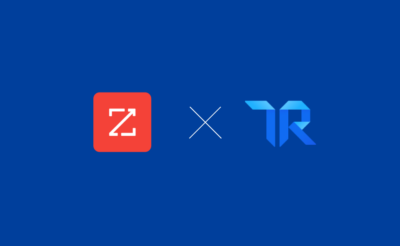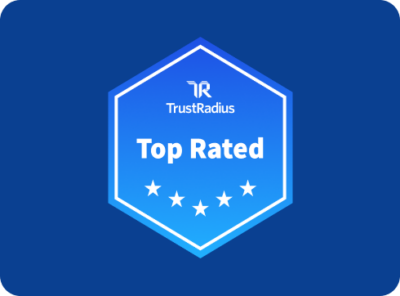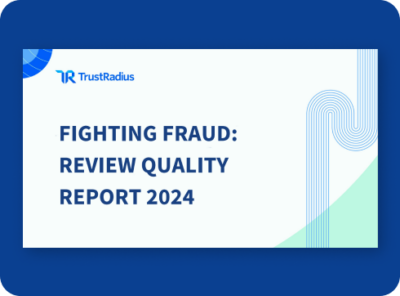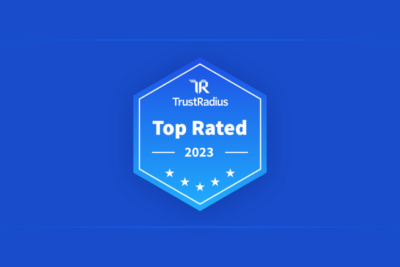B2B Marketers: The Intent Data Trend is Here to Stay
Sales and marketing teams understand that a core part of their job is reaching the right audience at the right time with the right message. But as B2B marketers face a seemingly endless supply of vendors and solutions, many struggle to understand the intent data trend or its importance.
It’s not just industry tactics and technologies that are changing. Consumer behavior continues to shift toward digital-first buying. Even before the pandemic, 68% of B2B buyers preferred to research online independently, according to Forrester. Gartner predicts that 80% of B2B sales interactions will be digital by the mid-2020s, and according to the TrustRadius B2B Buying Disconnect survey, 77% of buyers say that once they identified a need, their first step was to do their own research. Only 23% contacted a sales representative.
As the industry moves toward a cookieless future, intent data adoption is growing—and it’s not a fad. Research from Demand Gen Report highlights that intent data is already a pipeline accelerator for many companies, especially those in high-growth mode. Successful businesses use intent data to reach some of the highest-quality in-market buyers available, while slower-moving companies will miss key revenue-driving opportunities.
Read on to learn more about the different types of intent data and how smart marketers use it to supercharge the effectiv their campaigns.
What is intent data?
Generally speaking, intent data is a behavioral data set that indicates when a buyer is in the market for a specific product or service. This data can be obtained through multiple sources, including first-party intent data collected directly by a publisher from their website. Intent data can also be obtained through data-sharing partnerships. Some brands, such as TrustRadius, offer second-party downstream intent data to external partners. Third-party intent data is available from data conglomerates.
Each intent data type has unique applications and benefits, so it’s important for brands to collect, analyze, and utilize different types to fully reach their in-market buyers based on where they are in their journey.
First-party intent data helps identify the behavior of users who are already familiar with a business, but it won’t give insight into users searching for their product on another website, for instance. Third-party intent data can offer a large pool of potential in-market buyers, but the signals are topical and based on keyword searches. Campaigns developed solely using third-party data will not be as effective with bottom-funnel conversion because of the broad audience.
Meanwhile, second-party downstream intent data helps bridge this gap with in-market signals based on first-party data.
How intent data adoption benefits your brand
With intent data, brands can focus on potential buyers most likely to be a good fit for their offering and who are closer to a purchase. As brands look for targeting capabilities for lower-funnel buyers, a key differentiator is moving beyond standard audience attributes and focusing on behavioral insights.
By collecting and analyzing downstream intent data, brands can draw conclusions about prospective customers’ purchase intentions. Marketing and sales teams can prioritize buyers based on engagement and interest, then offer messaging that can be crafted to the appropriate timing and personalization for prospects based on where they are in the buying journey. For example, offering a free trial or demo, serving competitive take-out language, and customer proof points.
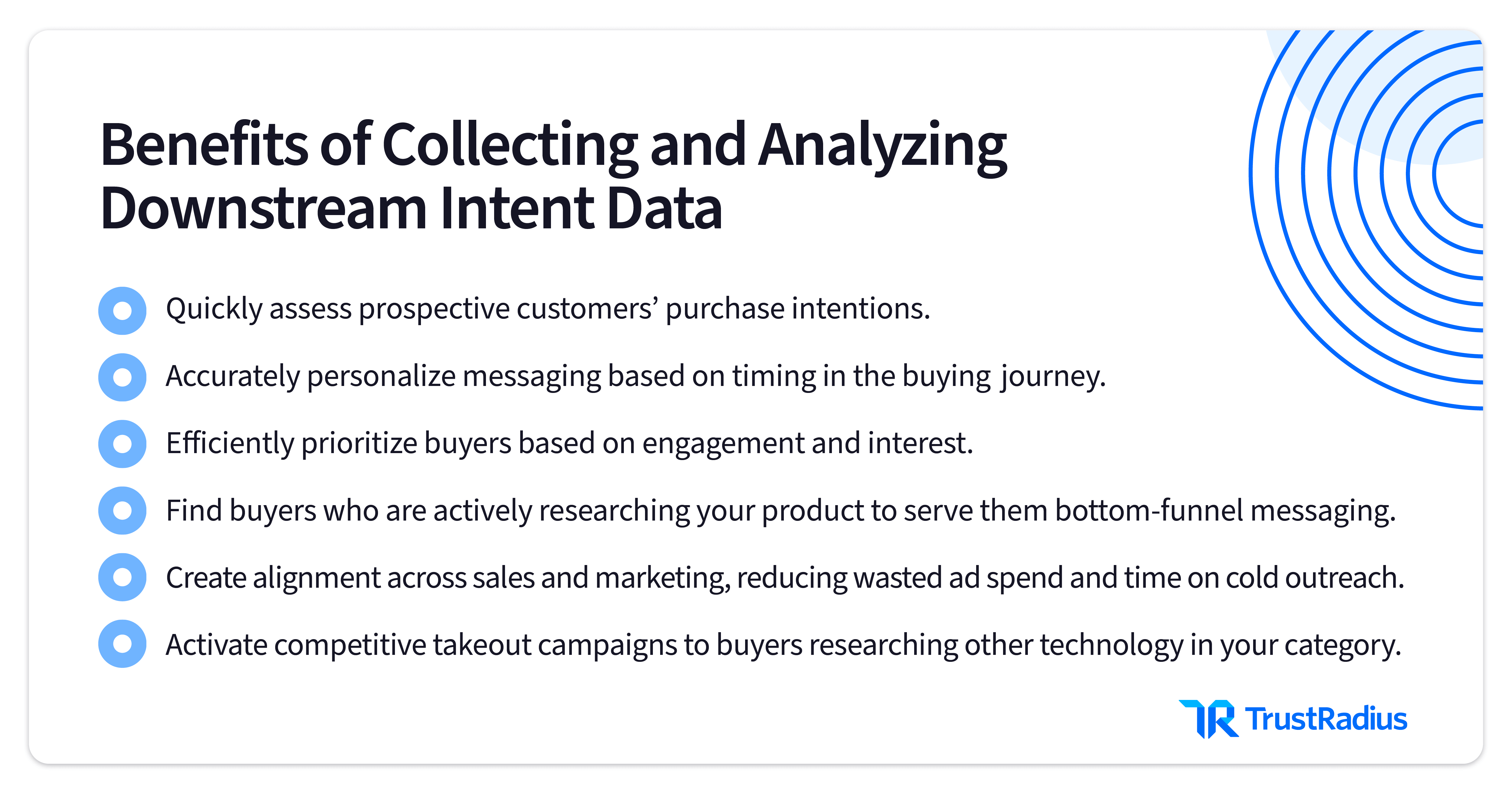
Downstream intent data’s role in B2B marketing and sales
Downstream intent data has applications throughout the buyer’s journey, including finding new deals, accelerating deal cycles, increasing win rates, retaining customers, and finding opportunities to grow the business through cross-selling and upselling.
Downstream intent data can help align internal teams, give brands a better understanding of their buyers (or potential buyers) and competitors, improve the customer experience, and grow sales. But brands must understand the power of downstream intent data to use it effectively. Simultaneously, brands must also connect with high-quality sources of downstream intent data to ensure the maximum return on investment.
Align marketing and sales
While marketing and sales departments ultimately have the same goal, their methods of getting there can vary. Intent data gives all parties actionable insights into which prospects and/or customers to prioritize in their outreach. Brands can build a more powerful go-to-market strategy by aligning marketing and sales teams to target specific accounts. Doing so contributes to a more efficient ad spend, more effective sales outreach, and a hyper-personalized, improved experience for in-market customers.
Understand your target market
Unlike traditional targeting segments, intent data allows brands to understand which users are in the market for their product or service. This data also helps clearly define attributes of the audiences with intent to move further along the buying process faster. Brands can also build go-to-market strategies based on a market analysis of different technologies, such as search volume or insights into buyer behavior, and create targeted audience segments using intent data.
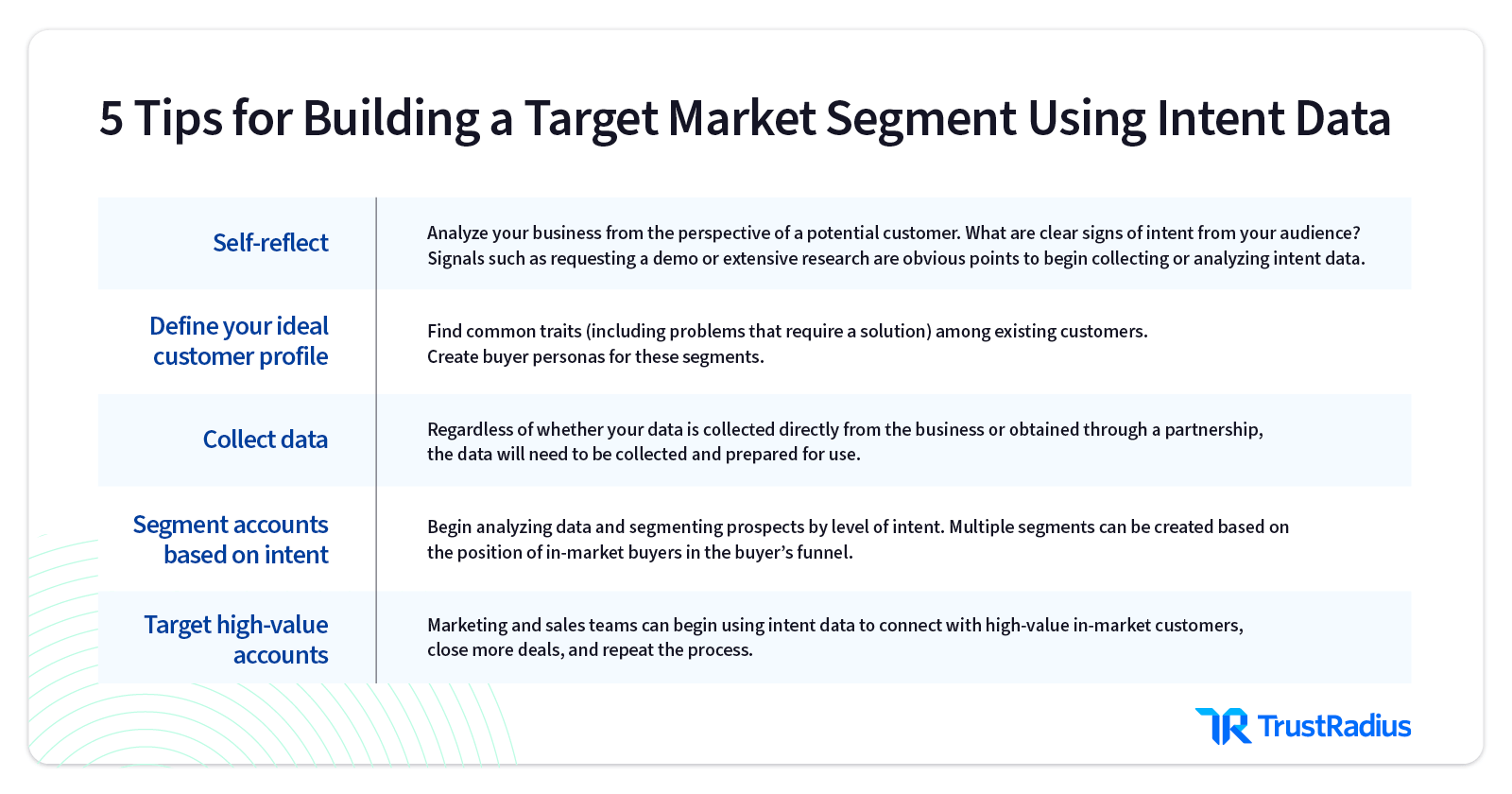
Understand purchase intent
Intent data focus on prospects’ overall decision-making processes rather than the final result.
For example, users rely on many different resources when researching a product or service. Modern consumers often elect to self-serve all or at least a portion of the buying process. Many consumers may be in-market for a brand’s offering—including actively researching and comparing products—without the brand having any data from those external sources. The entire sales process could be completed without the brand engaging with the in-market buyer.
By partnering with a downstream intent data provider like TrustRadius, brands can know when users are researching their products as well as when users are researching their competitors’. TrustRadius downstream intent data gives brands a more complete picture of the buyer journey.
Brands can utilize the data to identify prospective buyers or for competitive research, but that’s not all. Further actionable insights from downstream intent data include reviewing competitor pricing to determine whether it’s transparent and in line with other offerings.
Combining downstream intent data with other existing data helps brands understand their business from the customer perspective. This process can highlight gaps in the user experience that, once resolved, can result in higher sales and revenue.
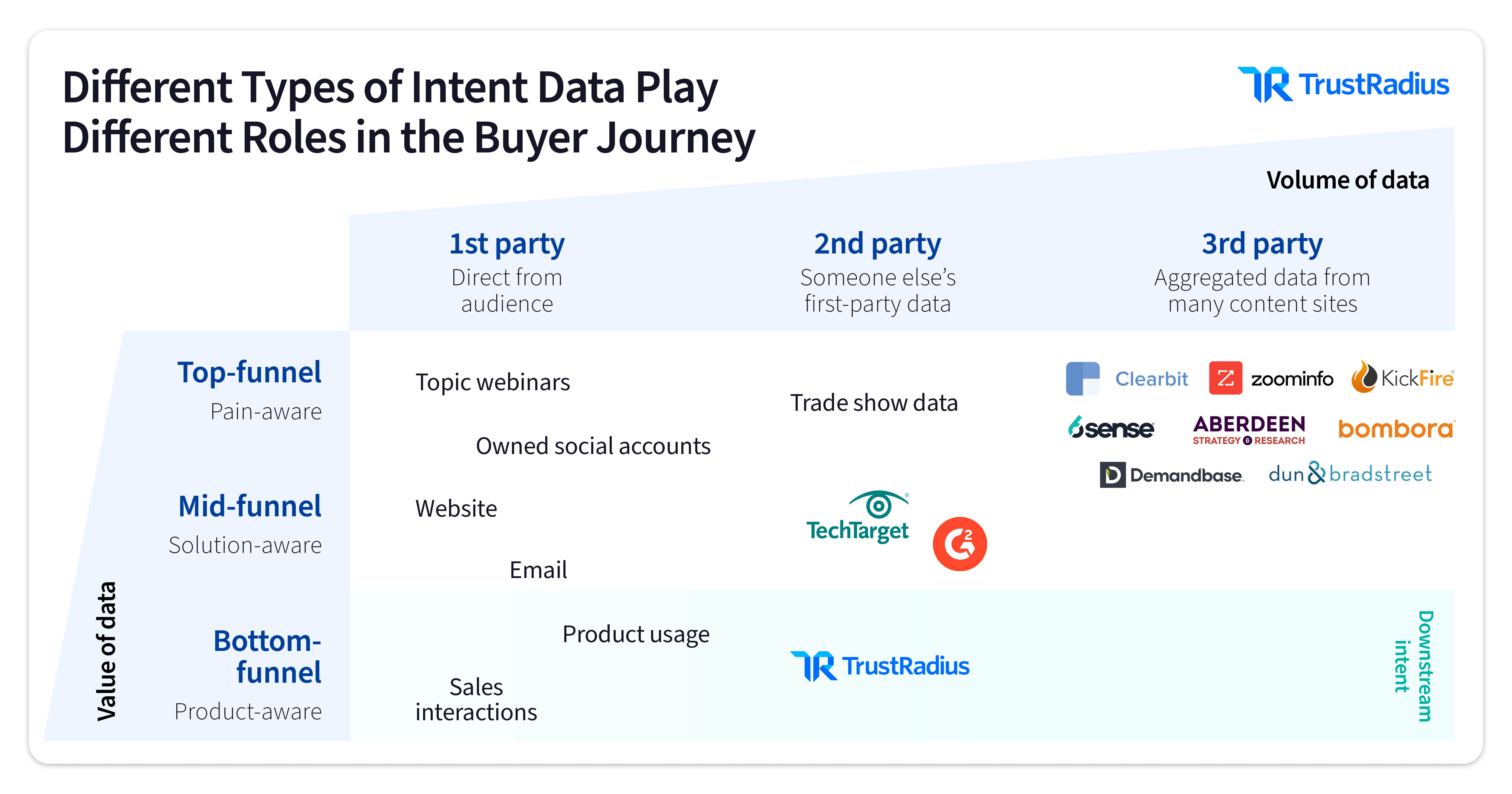
Personalize content campaigns
Like the customer journey, entire content campaigns can be personalized to fit the needs of various intentions. This can be especially effective when pairing downstream intent data with an integrated customer relationship management (CRM) platform. For example, TrustRadius’ Salesforce Connecter app maps intent data directly to instances in Salesforce, automatically matching visitors on TrustRadius with opportunities in Salesforce at the account level. By identifying new accounts and those in a sales cycle, brands can create individualized campaigns to integrate the intent data into programmatic ads or account-based management (ABM) platforms.
Enhance your ABM program
With insights gained from intent data, brands can introduce an early, personalized approach to ABM, which is proven to yield better results than traditional marketing. Identifying accounts showing signs of intent allows companies a more bottom-of-funnel approach to ABM.
Lead scoring is useful for leveraging intent data in an ABM program. By identifying accounts showing the most valuable intent signals, sales teams can begin targeted outreach and apply the intent data insights through a personalized approach. When sales teams focus on in-market buyers closer to a commitment, they improve closing rates and shorten sales cycles.
Personalize Messaging Through Seamless Integration
Make the most of your CRM, paid media channels and ABM platforms by layering in downstream intent data to better segment your target audience.
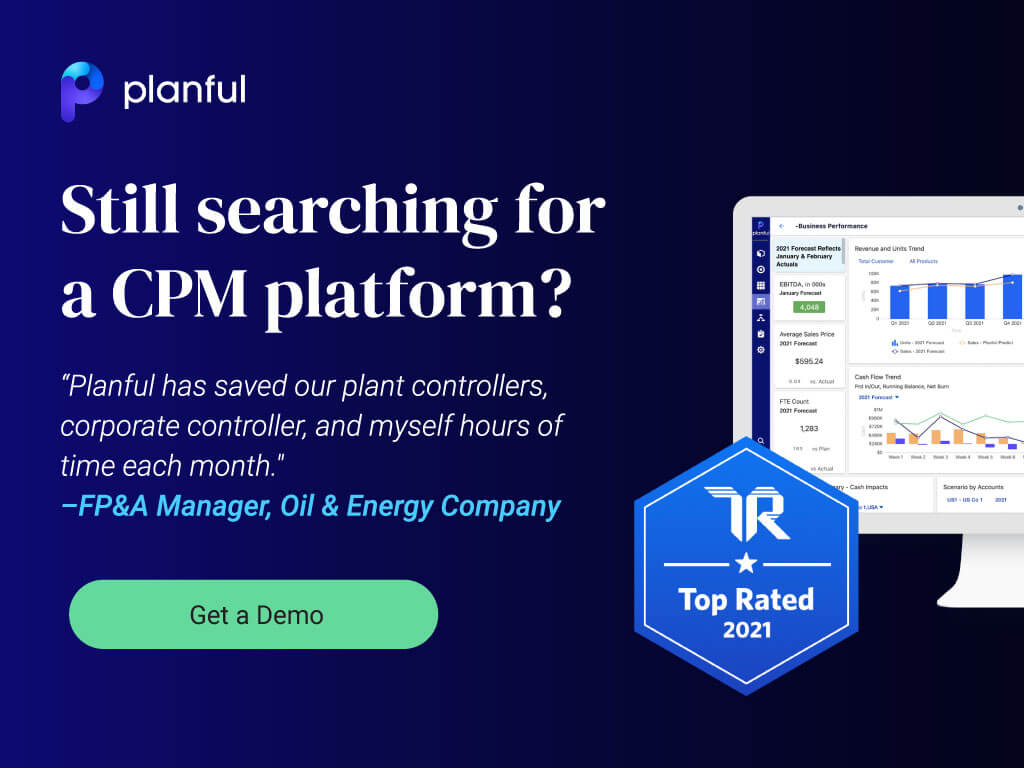
Integrate seamlessly
TrustRadius intent data integrates with Salesforce, Linkedin, and Demandbase, and it’s the only second-party intent data source that integrates fully with 6sense. Whether you’re integrating with a CRM (Salesforce), paid media channel (LinkedIn), or an ABM platform (6sense, Demandbase), downstream intent data gives you deal intelligence to accelerate the cycle. When done effectively, content and messaging can be tailored to your target buyer’s pain points or desired outcomes and generate pipeline faster.
Learn how Planful integrated TrustRadius downstream intent data to boost reach and engagement by over 300%.
Make intent data trends work for you
Many buyers today do their own research online before ever talking to a salesperson. Downstream intent data helps brands engage and influence those buyers at the right time with relevant messaging.
Expect the intent data trend to continue to gain importance and evolve. When brands include intent data as a part of their go-to-market strategy, they incorporate some of the most valuable prospect information available to increase conversions at the bottom of the funnel where marketing is most inefficient.
For a more detailed look at intent data, check out our Ultimate Guide to B2B Intent Data or contact us to find out what TrustRadius can do for your brand.
